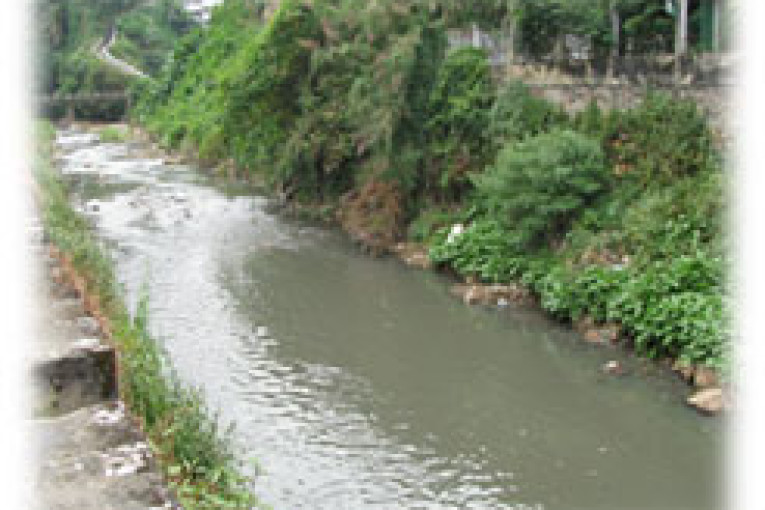
This report is based on Dr Arvind Kumar’s observations gathered during his visit to some areas, including Cheerapunjee, of Meghalaya on 30 October-2 November 2010 and his participation in the Workshop on Integrated Water Resources Management, jointly organized by the Central Ground Water Board and the Government of Meghalaya at the Pinewood Hotel, Shillong, Meghalaya on 1-2 November 2010.
Introduction
T he state of Meghalaya is endowed with bountiful natural resources. However, indiscreet use of these valuable natural resources, particularly through coal mining and other mining activities, these resources are being depleted at a faster rate and entail the potential of falling prey to natural calamities like flash rains, landslides or drought and scarcity of water resources.
he state of Meghalaya is endowed with bountiful natural resources. However, indiscreet use of these valuable natural resources, particularly through coal mining and other mining activities, these resources are being depleted at a faster rate and entail the potential of falling prey to natural calamities like flash rains, landslides or drought and scarcity of water resources.
Meghalaya is endowed with rich deposits of various minerals including coal. The coal deposits in the state are available in the southern fringe of Shillong plateau distributed in Khasi Hills, Garo Hills and Jaintia Hills. The coal is one of the widely utilized minerals in the state. Jaintia Hills District is a major producer of coal. Sutnga, Lakadong, Musiang-Lamare, Khliehriat, Ioksi, Ladrymbai, Rymbai, Bapung, Jarain, Shkentalang, Lumshnong and Sakynphor are the areas of extensive coal mining in the District. Coal  extraction is done by primitive mining method commonly known as ‘rat-hole’ mining. Bulk of the mining activity is in the form of small scale venture under the control of individuals who own the land. Mining operation certainly has brought wealth and employment opportunity in the area, but concurrently has led to wide-ranging environmental degradation and disruption of traditional values in the society. Environmental problems associated with mining have been felt severely because of the region’s fragile ecosystems and rich biological and cultural diversity. According to some experts, massive denudation of forest cover, scarcity of water, pollution of air, water and soil and degradation of agricultural lands are some of the conspicuous environmental implications of coal mining. Besides, haphazard dumping of overburden, caving in of the ground and subsidence of land have resulted in physical disfiguring of a vast area.
extraction is done by primitive mining method commonly known as ‘rat-hole’ mining. Bulk of the mining activity is in the form of small scale venture under the control of individuals who own the land. Mining operation certainly has brought wealth and employment opportunity in the area, but concurrently has led to wide-ranging environmental degradation and disruption of traditional values in the society. Environmental problems associated with mining have been felt severely because of the region’s fragile ecosystems and rich biological and cultural diversity. According to some experts, massive denudation of forest cover, scarcity of water, pollution of air, water and soil and degradation of agricultural lands are some of the conspicuous environmental implications of coal mining. Besides, haphazard dumping of overburden, caving in of the ground and subsidence of land have resulted in physical disfiguring of a vast area.
The coal mining has severely affected the water bodies of the area. The problem of water quality degradation and its adverse impacts on availability of potable and irrigation water, soil quality and agricultural productivity, and biodiversity in the area are the cause of serious worry.
Environmental problems caused by coal mining
A variety of impacts on the environment are created before, during and after the coal mining operations. The magnitude and nature of impacts can vary from minimal to significant depending on a variety of factors linked with ongoing mining processes as well as post-mining management of the affected landscapes. Undoubtedly, coal mining operations in Jaintia Hills have brought wealth and employment opportunities in the area, but concurrently have resulted in extensive environmental degradation. Large scale denudation of forest cover, scarcity of water, pollution of air, water and soil and degradation of agricultural lands are some of the prominent environmental repercussions of coal mining. Moreover, caving in of the ground and subsidence of land and haphazard dumping of coal and overburden have deteriorated the scenic beauty of the landscape.
Declining Water Quality
The water of rivers and streams passing through the Jaintia Hills is badly affected by contamination of Acid Mines Drainage (AMD) emanating from mines and spoils, leaching of heavy metals, organic enrichment and silting by coal and sand particles. Pollution of the water is evident by the colour of the water which in most of the rivers and streams in the mining area varies from brownish to reddish orange. Low pH (between 2-3), high conductivity, high concentration of sulphates, iron and toxic heavy metals, low dissolved oxygen (DO) and high BOD are some of the physico-chemical and biological parameters which characterize the degradation of water quality. The causes of water quality degradation include acid mine drainage, silting, and organic enrichment.
 |
| 3 pH of water after testing |
Tackling the problem
In the wake of degradation general environment and deteriorating water quality in rivers and streams of Jaintia Hills, there is an urgent need for initiating activities for restoration of ecological equilibrium in the affected areas. Some of the measures like filling of mine pits, channeling of acidic seepage for checking AMD contamination of water bodies and crop fields, extensive afforestation, neutralization of acidity, conservation of topsoil etc. coupled with scientific management of mining operation can be helpful in alleviating the environmental problems of the area.
Water Scarcity in Cherrapunjee
Cherrapunjee, the wettest place on earth, is suffering from acute water scarcity, has earned for itself the epithet ‘wet desert’. Cherrapunjee receives about 12000 mm rainfall annually, but the native people are faced with severe crisis of surface water especially during the lean season when rainfall is sometimes nil. Women and children trudging uphill with water-filled clay-pots on their backs from deep gorges is a common sight in Cherrapunjee. This observation is supported by several reports appearing in the media from time to time and during the course of my own visit to the area. The perennial springs gushing out abundant water are also now on the verge of drying up due to random large-scale destruction of forests. Some experts feel that there is no physical crisis of water in Meghalaya, but there is an economic scarcity of water only in Cherrapunjee, which receives the highest rainfall in the world.
Meeting Water Scarcity
There is need to revive traditional rain water storage systems supplemented by improved modern technology suitable for hilly the terrain. Equal emphasis needs to be placed on ‘equitable distribution’ of water among people. Meghalaya has had a long history of rainwater harvesting, but the same tradition is now considered ‘old-fashioned’, which marks an unfortunate shift in attitude. There is need for roof-top harvesting of rain water using tin-channels along the roof edges and bamboo channels from innumerable rain-fed springs to canalize water into storage tanks to solve the acute water crisis in rain-fed Meghalaya.
For sure, environmental and water-related problems in Meghalaya cannot be tackled without people’s participation. Acute shortage of drinking water, fast depletion of underground water resources, growing problems of pollution of ground and surface water, particularly the rivers and faster pace of drying up of traditional natural resources of water like lakes, streams, rivulets, ponds, baoris and wells etc., have added to the problems of water. The water problem is assuming added dimensions in the wake of fast shrinking of water resources and mounting pressure of population.
Suggestions
On the basis of my personal observations, interactions with the concerned persons and experts at the Workshop on Integrated Water Resources Management in Meghalaya recently held on 1-2 November 2010 at Shillong, following suggestions are offered for tackling the water-related problems in Meghalaya.
- Encouraging participation of all stake holders in the integrated water resources development and management;
- Need for State Government to adopt integrated approach while formulating the water resources management strategy;
- Need for upscaling the innovative structures like Jalkund, baoris, small springs etc. in the hilly terrains of North Eastern Region for rainwater harvesting along with integrated farming of high value crops;
- Encouraging Local indigenous traditional knowledge, such as bamboo pipe irrigation / low cost bamboo filter shallow tubewell / wheel and bucket method of extraction in the rural areas;
- Need for disseminating knowledge about techniques/ technologies that improve the efficient use of water at grassroots level of village / Panchayat / Block;
- Urgency for encouraging use of High Density Polyethylene (HDPE) and Low Density Polyethylene (LDPE) pipes in drinking water supply and irrigation to prevent leakages and transit loss;
- Priority should be given to Water quality monitoring sector;
- Need for strengthening of infrastructures, human resources and upgradation of existing laboratories both in State level and Central level to facilitate micro-level quality monitoring;
- Urgency for according top most priority for preservation of catchment area with scheme of afforestation so that water conservation is accelerated and soil erosion is prevented;
- Need for harnessing Public-Public Partnership (PPP) model in water sector in the state;
- Need for encouraging civil society (e.g. India Water Foundation and others) participation in water sector for better convergence, water quality monitoring etc.



